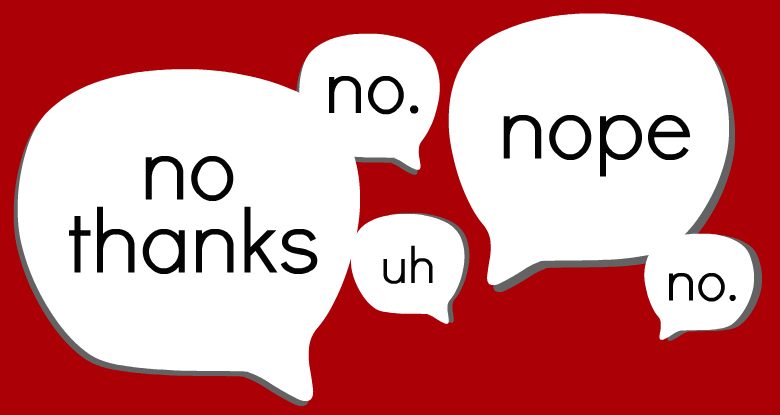
Communicating effectively under pressure can be difficult for some people.
Especially when put on the spot and the answer is ‘no’.
Here is how to use ‘no’ to your advantage and clearly communicate the point you want to make.
The phrase will be remembered as a misguided and ineffective anti-drug message from the 1980s.
Spearheaded by First Lady Nancy Reagan, it missed the mark with vulnerable teenagers.
So why do we urge our clients to Just Say No?
Because it’s often the most difficult thing to say when put on the spot.
In our media training courses, we regularly simulate radio and TV interviews.
When doing so we put our clients on the spot.
We’re fond of asking our clients if they can ‘guarantee’ outcomes?
‘Can you guarantee those made redundant will find new jobs?’
‘Can you guarantee staff will be better off under the new pension arrangements?’
‘Can you guarantee that an incident like this will be prevented in the future?’
The answer should almost always be ‘no’.
Which, with practice, is one of the outcomes of the training.
So why are people reluctant to say no?
So let’s be clear.
We must at times say ‘no’ when being backed into a corner.
Socially, we’re well used to it:
Question: ‘Will you have a drink before you go?’
Answer: ‘No thanks – I’m driving.’
Question: ‘Can you join us for dinner on Saturday?’
Answer: ‘No – we’re already booked up thanks.’
Question: ‘Coffee? Tea?’
Answer: ‘No thanks – I’ll have water.’
It’s perfectly easy until we think about it.
Learning to say ‘no’ is one of the most liberating experiences in our communications skills courses.
It rejects what you dislike and allows promoting what you do like.
Quite simply, it’s the key to asserting yourself and your own thinking.
Communicating effectively.
Rather than being subjected to somebody else’s ideas and plans.
I’m always impressed when I see an interviewee answer ‘no’ to a number of questions.
As long as they then assert what they do believe what they do want to say.
But be willing to use all the varieties of ‘no’ that are available!
‘No.’
‘Not at all.’
‘Quite the reverse’.
‘Absolutely not!’
‘On the contrary!”
After using these words or phrases, quickly build your argument – and take it where you want to go.
Then stop.
It’s the equivalent of saving a goal at one end of the park then running to the other end and scoring.
A two-year-old child really hates to be told ‘no’ when all their short life they’ve been admired, lauded and loved.
Then suddenly the word ‘no’ hits them like a hammer blow.
But only by asserting our values with a toddler can we stop them from over-eating, falling over or playing with fire.
So we need to put our inner child aside – learn to love ‘no’ – and use it.
You can use it in interviews, at work and with family and friends to get where you need to go.
Practice makes perfect.
Bill McFarlan is Executive Chairman of Pink Elephant Communications in Glasgow.
You can view his full profile here.
Photo credit // unsplash.com
21st March 2018 Featured in: Assertiveness training blogs, Blog, Communication skills training blogs By: Pink Elephant
Some media trainers knock you down…and leave you down. Our media coaches show you how to deal with each knock…and still win through. So you have the presentation skills to perform – with confidence.